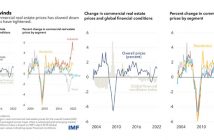Why Print is Good for Business & Your Health
Being consumers in the digital age, we’re desperately trying to keep up with the constant flow of information coming through on our phones, laptops and tablets. We pack in as much data as possible while multi-tasking at work and home and settling down in the evenings is not as easy as it used to be. While marketing professionals continually develop content engagement strategies, we the consumer are also ever changing the way we prefer to digest our daily downloads. In the past five years, digital platforms have all but called print content dead, however new studies are showing that there’s a resurgence in reading ‘the old way’.
Here are the top ten reasons print is still thriving.
10. Cost. Print advertising, article-based content and fresh photography is still the most cost effective customer engagement for new businesses. Local magazines and newspapers are still the number one way to introduce a company profile or person of interest even if the intent is to move into digital advertising. In communities with a high number of retirees who prefer to read newspapers and magazines – print will surely never die.
9. Less Competition. In a world where we’re constantly bombarded with online pop ups and banner advertisements, consumers have reported that receiving a personalized direct mailer these days stands out. It’s difficult to remember how many impressions of advertisements for shoes you may see online in one day, however, when receiving a coupon or an invitation in the mail — it’s most likely to get used within a week’s time. Furthermore, direct mail discounts are still one of the top ways to track customer returns.
8. Sustainability. From recipes to books to websites, it’s easier to read just about anything on our digital devices. We forget how much energy it takes to keep those devices going, something that print doesn’t require. It’s reported that more than 60% of paper used in businesses is recovered for recycling and more offices are using recycled and sustainable materials. These practices cut down on carbon emissions and landfill use.
7. Nostalgia. Current studies show that multiple generations simply enjoy the feel, smell and appreciation for print. Opening a newspaper on Sunday morning or a new book is associated with emotions from child hood, college etc. Millennials have also shown an uptick in reading more print and have a have a surprising appreciation for comics, old books and magazines off the rack.
6. Credibility. With the onslaught of ‘fake news’ sites and articles on our favorite social media platforms, it’s no wonder that more people are choosing to get their news from credible sources in print and are only subscribing to digital articles that use both print and a digital medium in tandem.
5. Health. There have been multiple studies about reading print versus reading on our phones, computers and other devices. Reading on digital screens for long periods of time can result in such issues as headaches, carpal tunnel and insomnia. Reading print has not only proven to be healthier on our eyes, but also sleeping patterns and muscle aches.
4. Ease. Reading print is not only easier on the senses, it’s less draining and better when navigating or flipping back and forth. For marketing purposes, presentations should always be available in print so that participants can easily make notes for later reference.
3. Memory. With new technology, humans can take in double the information they once did. While this may seem productive, our cognitive memory is suffering. Studies have shown that there’s a clear difference between quality versus quantity. With so much information going in, the brain must work harder to decipher what to remember. Because our brains are more relaxed when we read print, our memory sensors work better and thus we retain much more.
2. Skimming. Reading digital devices while using our fingers to scroll or swipe causes us to ‘skim’ over important content. Skimming doesn’t allow for information to fully absorb and store in the brain and thus becomes a healthy reading habit.
1. Tactile. Last but not least — digital reading does not give us the same tactile responses as print materials. Touching, smelling and even turning pages stimulate the senses and better for memory.
So, put down those devices and smell the pages!
References:
Kutscher, Martin L. MD (2017) The Effects of Digital Technology on Reading. Psychology Today
Integrated Media Research Center (imresearchcenter.com)





